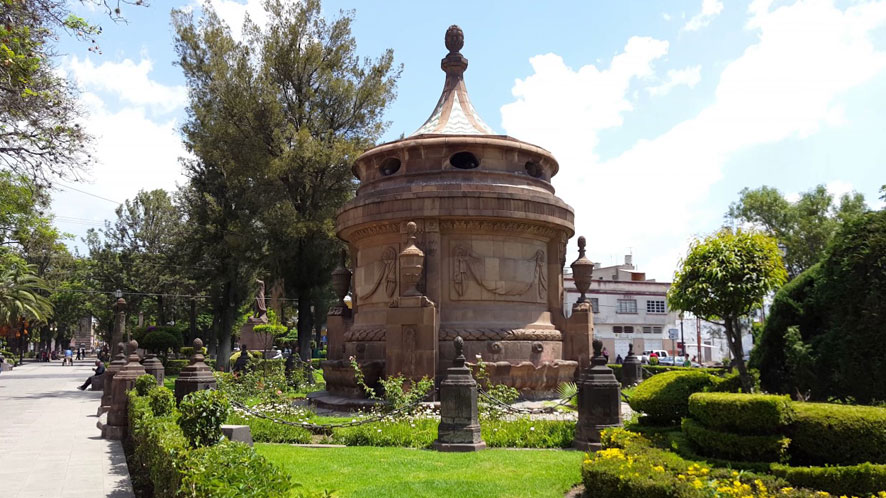At the beginning of the S. XIX Governor Ildefonso Díaz de León ordered the construction of a hydraulic system that would supply the city permanently with the spring discovered in 1617 and located in the Sierra de San Miguelito, properly speaking Cañada del Lobo, located 4 km from the city, which with resources from the State Government and the Peoples of San Sebastian, San Miguelito and San Juan de Guadalupe, this work of significance was carried out, since it was one of the few civil works carried out during the transition period of Independent Mexico and the Porfiriato.
His water boxes were used for pumping and supplying water, his designs are attributed to the painter José Guerrero Solachi and his execution to Juan Nepomuceno Sanabria who elaborated the aqueduct and water boxes simultaneously, This work was not completed after the death of Governor Díaz de León, however, after four years the construction of the water boxes and the planting of poplars was completed, especially the walkway of the Calzada de Guadalupe, which was executed without the payment of a single peso by Juan Sanabria. In the construction of the water boxes, Magdaleno Hernández and Germán Torrescano worked as supernestantes; master builders Ángel González, Norberto Ramírez, José Ma. Márquez and Hermenegildo Vázquez; director of the work Pedro Torres; master stonemason Miguel Ramírez. Although the stonemasons Carmen Pérez and Catarino Torres are also mentioned.
Juan Nepomuceno Sanabria received a medical kit, two books on modern engineering and an honorary diploma from the Governor of the Kings.
On the other hand, he received a gold medal which -on the front side he dictated-; “To C. Juan N. Sanabria, the City Council of San Luis Potosí” and on the reverse side “For his philanthropy, working for free to supply water to the City”.
The Water Box “Conservera” is taken as one of the main symbols of the city and a source of identity among the Potosí people of the Capital, its operation since 1831, marked the development of the City for the South in the nineteenth century, generating a meeting space between the Potosí people of that century, trade and services.

